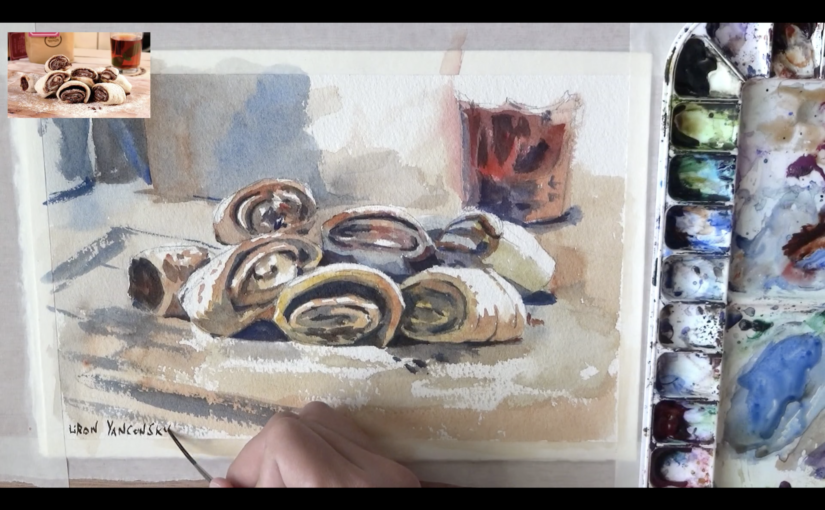Hi there!
A while ago I worked on this painting of a pastry called Rozalach (which is insanely delicious!!).
I also recorded the entire painting process.
As I was watching the footage, I realised it would be great material to talk about DRAWING in the context of painting.
In other words, this is great content to explain how to draw for a painting.
so without further ado, here’s the video (and if you prefer to read – scroll on! 😉)
Drawing for a painting is different
Drawing for a painting is different from drawing when pencil is the final purpose in mind.
It requires to be as detailed as necessary, but not more than that.
With this process, I starting by marking the edges of the pile of Rozalach pastries.
You can see what these look like in the reference pic on the top left corner.
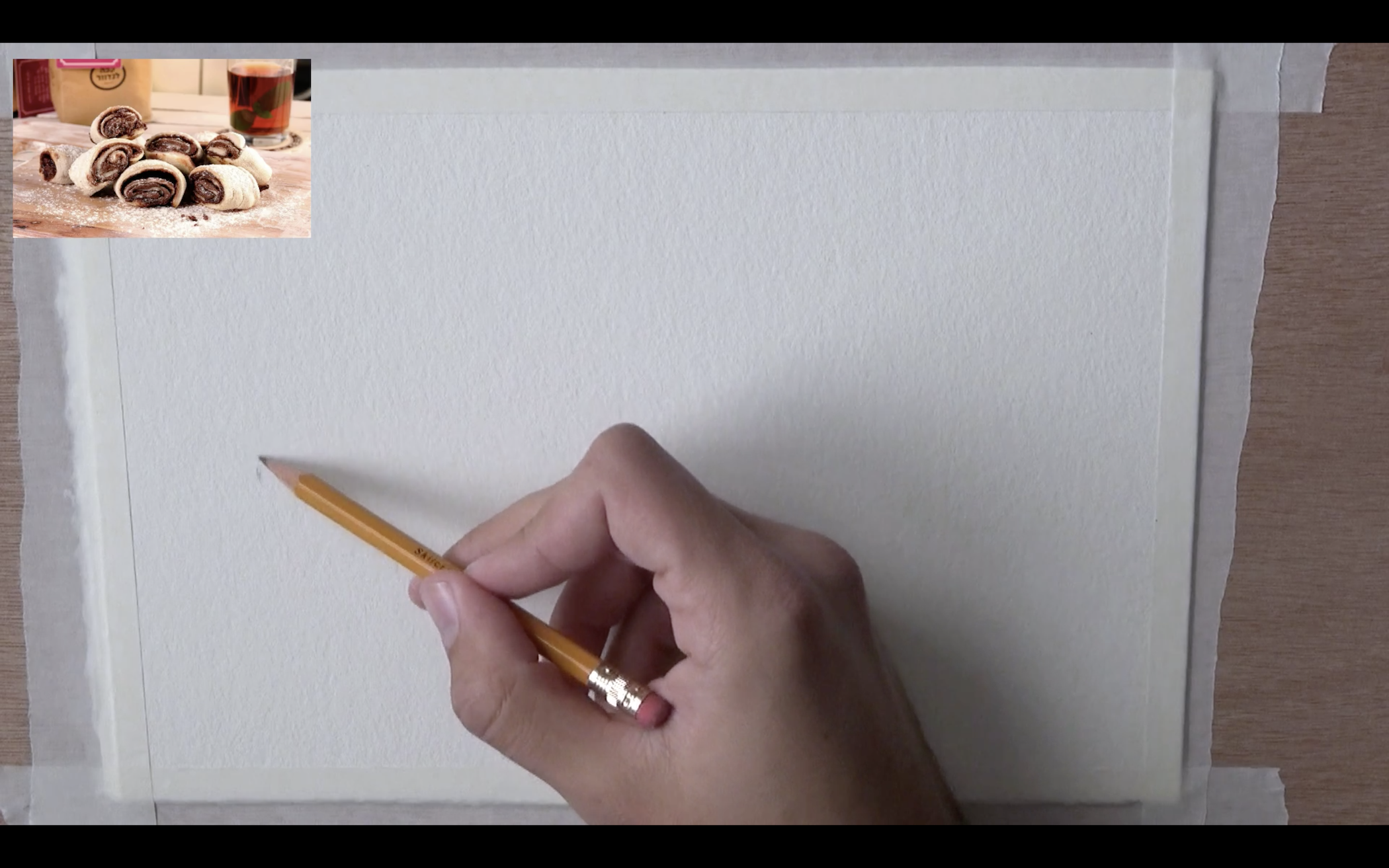
Once I finished indicating the edges, I was able to fill up the space with quick sketches, representing the shapes of the tasty doughy rolls.
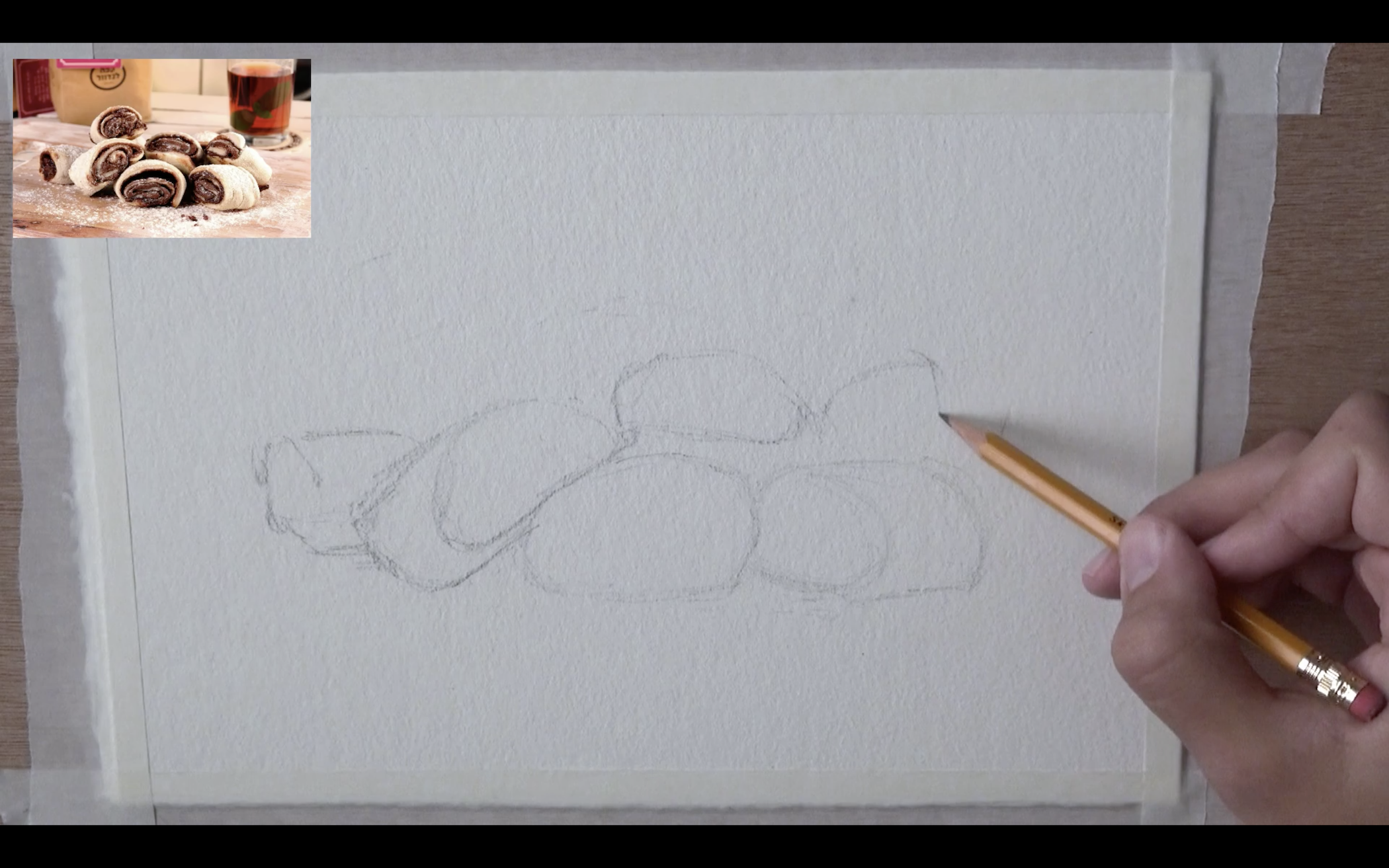
This is the hardest part. Once you get those guidelines in, it’s only a matter of filling in the gaps with the finer details.
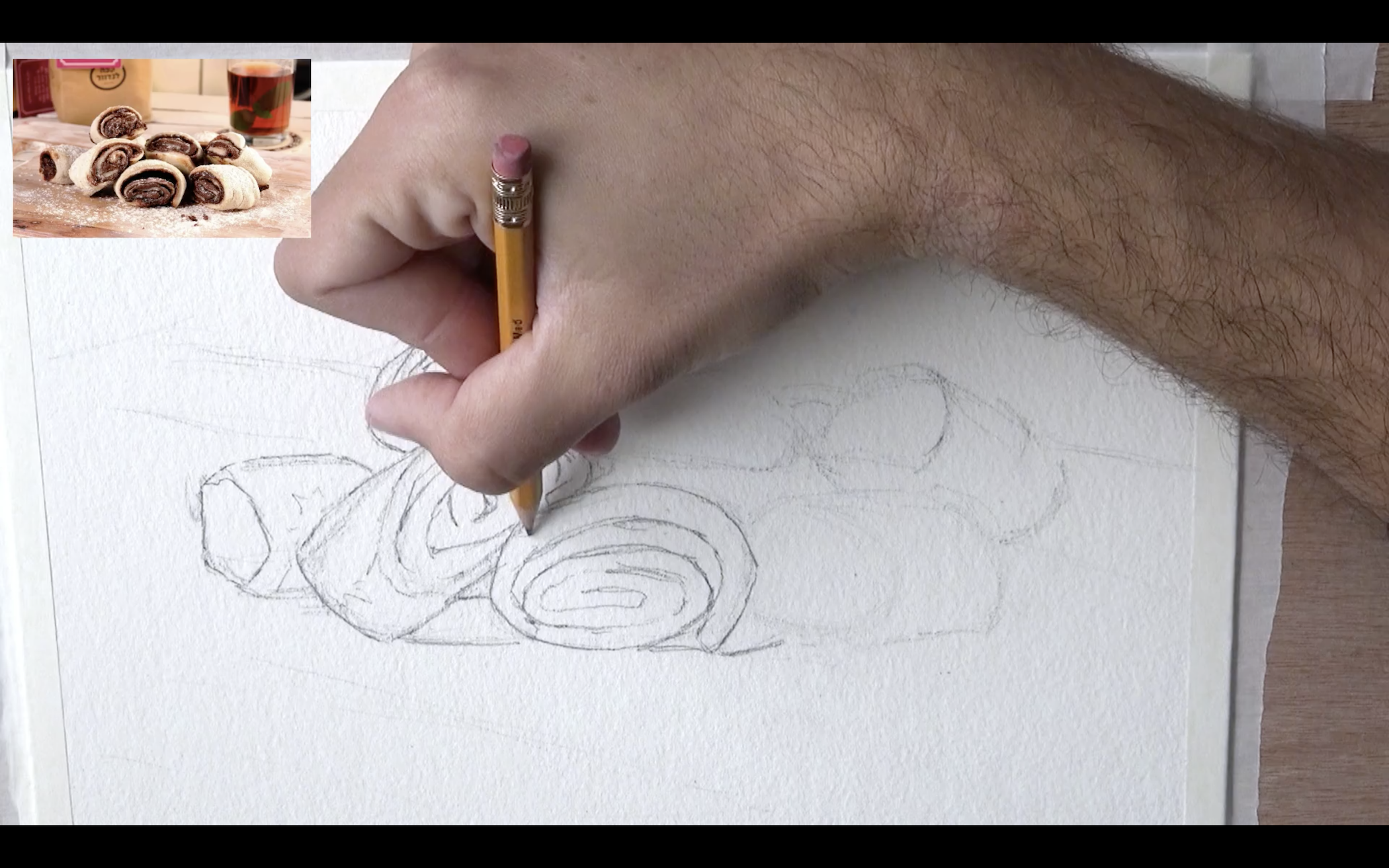
Here you see me filling in those details. The main things I’m looking for are strong changes in values (meaning darks and lights).
When drawing for a painting, this is extremely important.
Here is the final drawing!
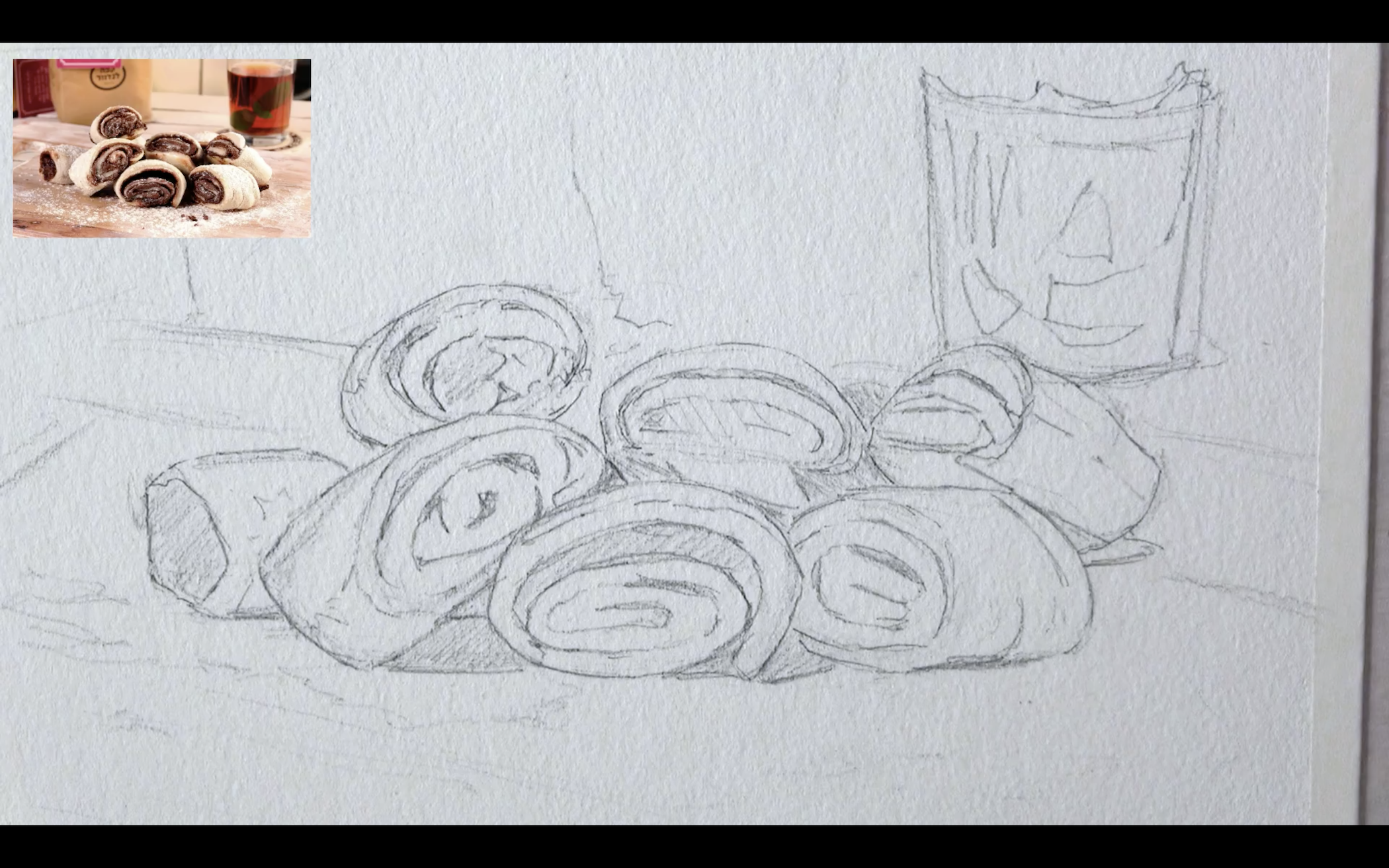
This is a good indication of how a typical drawing that’s ready to paint will look.
Some prefer to be more detailed, while others prefer less details.
I will tell you what – I recommend experimenting with both. Trying different levels of detail has its utility.
More detailed – may allow for more realistic results.
Less detailed – allows you to practice using the brush more, and “drawing” with the paint (rather than just “coloring” the areas between the lines).
And now is my favourite part – The drawing is ready to be painted! At this stage I can already imagine the colors I’ll be using, and the transparency of watercolor (which I love).
Painting
List of colors:
- New Gamboge
- Quinacridone Burnt Orange
- Pyrrol Scarlet
- French Ultramarine
Here is the very first wash.
My main concern is achieving an even result that’s “flowing” properly, and a variety of interesting colors.
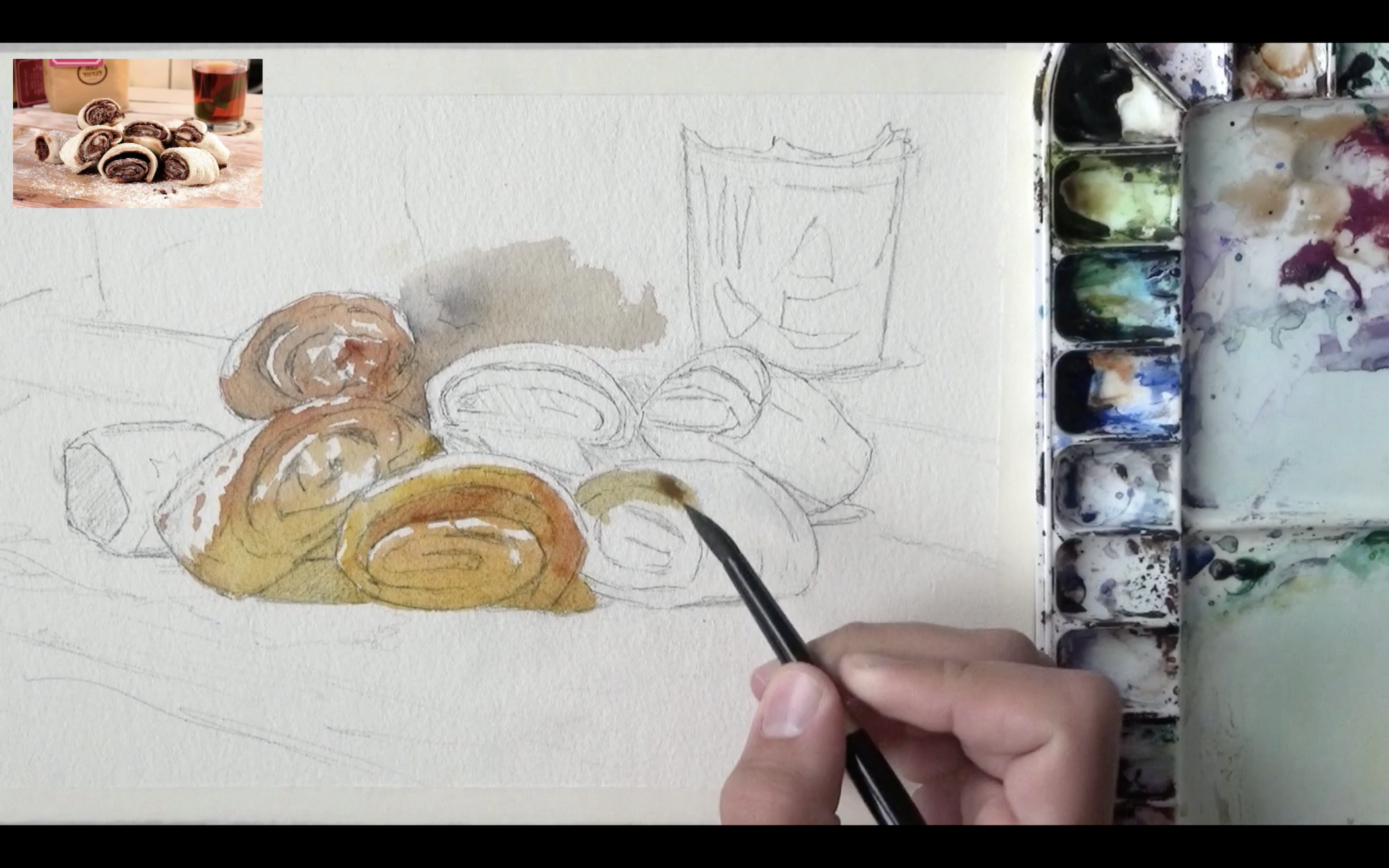
Sometimes I go really wild with my colors (especially with portraits), but this time I decided not too.
I was afraid the colors will make it harder to communicate what I painted (a pastry that not everyone will be instantly familiar with).
And so I decided to go with an interesting range of yellows, oranges, reds and some blues.
Notice how I also made sure to connect the Rozalachs with the background. The purpose is to ensure they don’t appear to be “cut off” from the background. We want them to look like an integral part of the setting.
I find this extremely important at times, especially with painting people as a part of a scene.
After that, I move onto the second wash, where we’ll put in the darker shades.
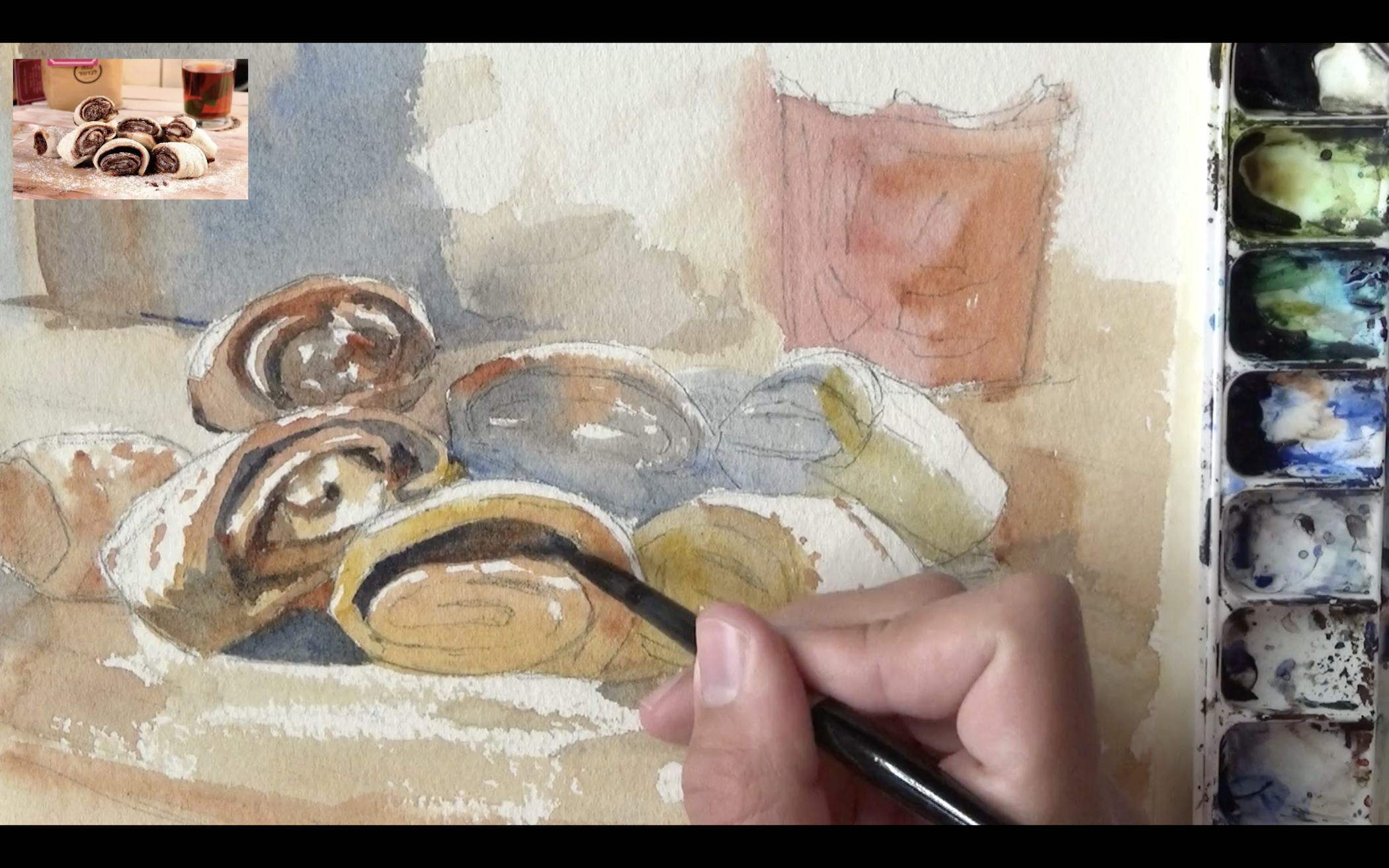
This immediately breaks the painting down into more discernible shapes that actually have a meaning.
In most paintings, I find this to be the most difficult stage. That’s because you really need to start paying attention to the drawing.
There’s one cool effect I think I was able to get at this stage.
The pastries are covered in sugar powder. To indicate that powder’s texture I made use of the paper’s texture (I’m using a cold-press paper for this one).
Notice the areas just under the Rozalachs in particular. I used dry brush strokes that will preserve the paper’s texture and create a powder-like effect.

And here’s the final result!
There was actually a third layer as well. Make sure to watch the full video to see it.
I’m very pleased with how this painting turned out. I love the color selection, composition, temperature and overall feeling.
I hope you enjoyed this quick lesson, and I’ll talk to you soon!
– Liron

